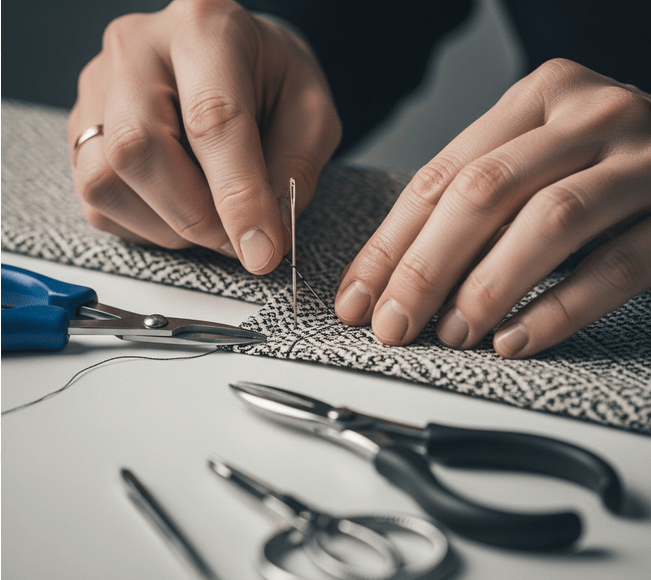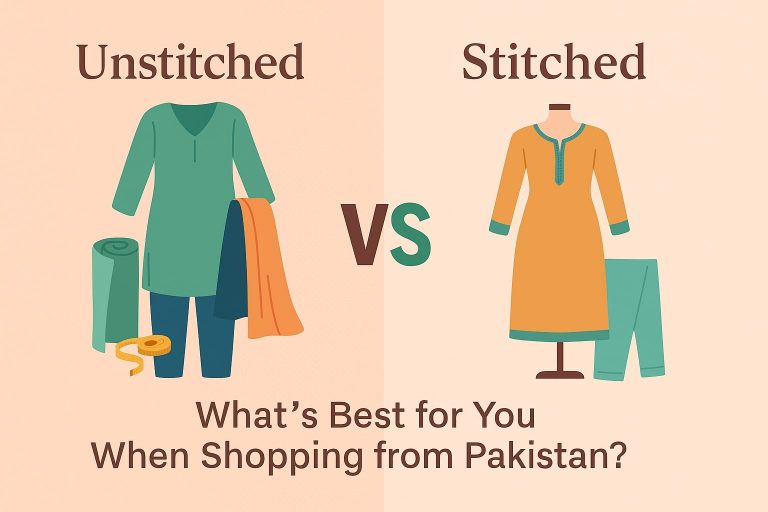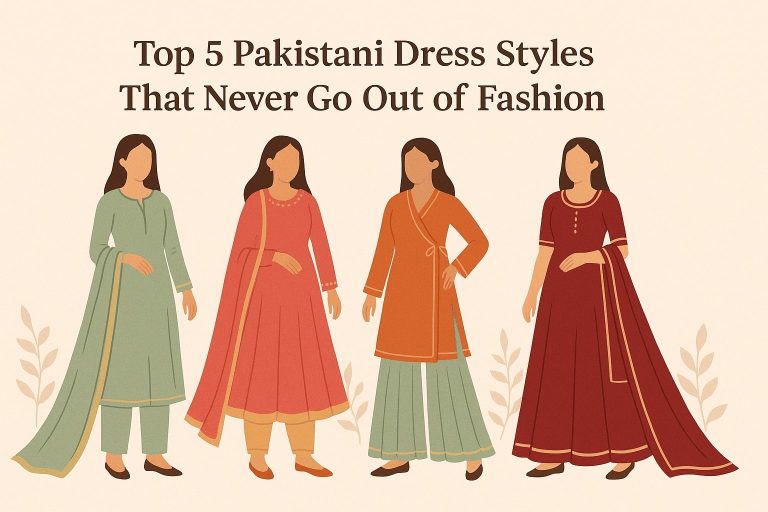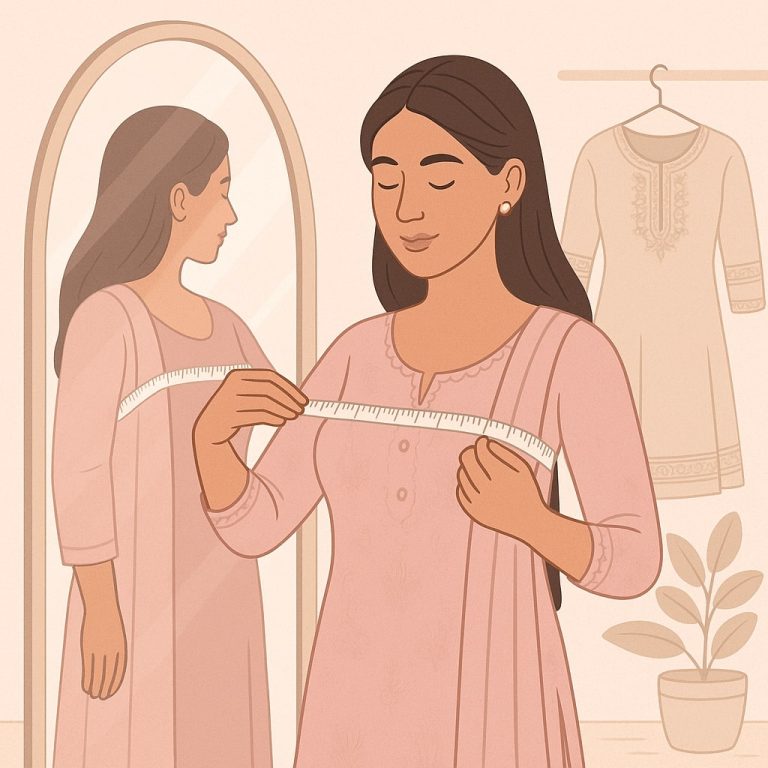Donec efficitur, ligula ut lacinia
viverra, lorem lacus.

Your Top 5 Stitching Questions Answered by Our Experts: Achieve That Perfect Fit Every Time!
Your Top 5 Stitching Questions Answered by Our Experts: Achieve That Perfect Fit Every Time!
Are you tired of waiting for your dream outfit, only for it to arrive and feel… almost right? In the vibrant world of Indo-Pak fashion, where every stitch tells a story and every drape adds grace, the perfect fit isn’t just a luxury – it’s a necessity. At WomanlyGrace.com, we understand the nuances of tailoring traditional wear, and we know you have questions.
That’s why we’ve gathered our seasoned experts, tailors with decades of experience in crafting exquisite salwar kameez, timeless sarees, elegant lehengas, and more, to answer the five most pressing questions you’ve asked us. Get ready to unlock the secrets to flawless custom stitching and step out with unmatched confidence and grace!
1. “How Do I Ensure I Get the Perfect Measurements for My Custom Outfit?”
This is perhaps the most crucial step, yet often the most overlooked or mishandled. Perfect measurements are the bedrock of a perfectly fitted garment.
Our Expert Says: “Accuracy is paramount, and consistency is key. Don’t rely on old measurements, as our bodies subtly change over time. Always take fresh measurements for each new custom order. The best way to ensure accuracy is to have someone else take them for you, ensuring you stand naturally without holding your breath or pulling yourself in.”
Here’s how to master it:
- Use a Flexible Measuring Tape: Ensure it’s not stretched or worn out.
- Wear Appropriate Undergarments: Measure over the undergarments you intend to wear with the final outfit. For blouses or kameez, wear your best-fitting bra.
- Stand Naturally: Relax your shoulders, keep your posture straight but not stiff.
- Key Measurements to Double-Check:
- Bust: Measure around the fullest part of your bust, keeping the tape horizontal.
- Waist: Measure around the narrowest part of your torso, usually just above your navel.1
- Hips: Measure around the fullest part of your hips, typically 7-9 inches below your natural waistline.
- Shoulder: Measure straight across your back from the tip of one shoulder bone to the other.2
- Arm Length & Around Arm: Measure from the shoulder tip to the desired cuff length, and around the fullest part of your upper arm.
- Outfit Lengths: For kameez, measure from the highest point of your shoulder down to the desired length. For trousers/salwar, measure from your natural waistline down to the desired length.
- Communicate Clearly: If you have a specific fit preference (e.g., loose, fitted, comfortable), convey this along with your measurements. A small note like “I prefer a relaxed fit in the waist” can make a world of difference.
- Consider Margins: A good tailor will add appropriate margins, but understanding if you prefer extra allowance for future adjustments can be helpful.
Ready to take your measurements like a pro? Check out our detailed [Measurement Guide for Traditional Attire] (link to internal article: “Achieving the Perfect Fit: A Guide to Taking Accurate Measurements for Indo-Pak Attire”) for step-by-step visuals!
2. “Which Fabric is Best for My Desired Outfit and Occasion, Especially for the Indo-Pak Climate/Style?”
The right fabric can elevate an outfit from ordinary to extraordinary, affecting drape, comfort, and longevity. Given the diverse climate and rich textile heritage of the Indo-Pak region, choosing wisely is crucial.
Our Expert Says: “The ‘best’ fabric is always a blend of occasion, climate, and personal preference. For hot, humid weather, breathable natural fibers are your best friend. For grand occasions, luxurious silks and embellished materials create a majestic feel. Always consider how the fabric will drape and move with your body.”
Here’s a quick guide:
- For Everyday Comfort & Warm Climates:
- Cotton: Breathable, absorbent, easy to maintain. Perfect for daily wear salwar kameez or comfortable kurtis.
- Lawn: A finer, softer cotton, highly popular for summer collections due to its lightweight and airy feel.3
- Linen: Highly breathable and absorbent, linen offers a chic, relaxed look, though it wrinkles easily.4
- For Semi-Formal & Festive Occasions:
- Chiffon: Lightweight, sheer, and flowy, ideal for elegant dupattas, blouses, or layered dresses.5
- Georgette: Similar to chiffon but slightly heavier with a crinkled texture, offering a beautiful drape for kameez and sarees.
- Crepe: A versatile fabric with a crinkled surface, excellent for structured yet flowy garments.6
- Silk (Raw Silk, Art Silk): Offers a rich sheen and luxurious feel.7 Raw silk is great for structured blouses and lehengas, while art silk provides a similar look at a more accessible price.
- For Grand Events & Bridal Wear:
- Velvet: Adds opulence and warmth, perfect for winter weddings or rich occasion wear.8
- Brocade: Heavily woven fabric with intricate patterns, lending a regal feel to lehengas, blouses, or kurtis.
- Organza/Net: Often used for overlays, dupattas, and intricate embroidery work to add volume and grandeur.
Dive deeper into the world of textiles with our guide on [Choosing the Right Fabric for Every Occasion] (link to internal article: “Choosing the Right Fabric for Every Occasion: A Guide to Cottons, Silks, and Chiffons”)!
3. “My Stitched Outfits Often Don’t Fit Quite Right. What Are the Common Reasons and How Can I Fix This (or Prevent It)?”
This is a common frustration, and thankfully, it’s often preventable! Poor fit can be due to a few key culprits.
Our Expert Says: “Nine out of ten times, fit issues stem from inaccurate initial measurements or a lack of clear communication regarding fit preference. Sometimes, it’s also about understanding the fabric’s stretch or drape, which a good tailor accounts for.”
Common Reasons & Solutions:
- Inaccurate Measurements: As discussed in Question 1, this is the biggest factor.
- Prevention: Always provide fresh, accurate measurements taken by someone else. Double-check them.
- Fix: A skilled tailor can often alter outfits that are slightly too big.9 Making something larger is much harder and sometimes impossible depending on the available seam allowance.
- Unclear Fit Preference: Saying “fitted” might mean different things to you and your tailor.
- Prevention: Be specific. Use examples: “I want it comfortably fitted, not too tight,” or “I prefer a slight looseness around the waist for comfort.” Providing a sample garment that fits you perfectly can be invaluable.
- Fix: Communicate the exact areas where the fit is off (e.g., “the sleeves are too tight,” “the bust is too loose”).
- Fabric Shrinkage (Pre-Stitching): Some natural fabrics like cotton or linen can shrink after the first wash.10
- Prevention: Always pre-wash or pre-shrink fabrics before sending them for stitching, especially if you plan to machine wash the final garment.
- Fix: If the garment has already shrunk and is too tight, it might be difficult to fix without adding fabric, which can alter the look.
- Lack of Seam Allowance: If a tailor leaves minimal seam allowance, future alterations become difficult or impossible.
- Prevention: Ask your tailor to ensure adequate seam allowance (typically 1.5 to 2 inches on each side for most garments).
- Fix: Unfortunately, if there’s no allowance, alterations are severely limited.
For a deeper dive into avoiding common tailoring pitfalls, read our article on [Solving Stitching Woes: Tips for Perfect Seams and Professional Finishes] (link to internal article: “Solving Stitching Woes: Tips for Perfect Seams and Professional Finishes”)!
4. “How Can I Ensure My Custom-Stitched Clothes Last Longer and Have a Professional Finish?”
You’ve invested in a beautiful custom piece; now, you want it to stand the test of time and look impeccable. The secret lies in quality stitching and proper care.
Our Expert Says: “A professional finish is a hallmark of good tailoring. It’s about neatness, strong seams, and attention to detail. Longevity comes from this foundation, combined with appropriate care specific to the fabric and embellishments.”
Keys to Professional Finish & Longevity:
- Quality Stitching:
- Even Stitches: Look for consistent, straight stitches without puckering or loose threads.
- Reinforced Seams: Stress points like armholes, side seams, and crotch areas should be double-stitched or reinforced.
- Neat Edges (Finishing): Raw edges should be neatly finished (serged, French seamed, or bound) to prevent fraying and provide a clean interior. This is crucial for garments that will be washed frequently.
- Matching Threads: The thread color should blend seamlessly with the fabric.
- Interfacing and Lining:
- Interfacing: Used in collars, cuffs, and necklines to add structure and prevent stretching, contributing to a crisp, professional look.
- Lining: Not only adds comfort and opaqueness (especially for sheer fabrics) but also helps the garment maintain its shape and reduces wear and tear on the main fabric.
- Care Instructions:
- Always Check Labels: If your fabric came with care instructions, follow them.
- Hand Wash Delicates: Embroidered or heavily embellished garments often require gentle hand washing or dry cleaning.11
- Ironing: Use the appropriate heat setting for your fabric. Ironing on the reverse side can protect embroidery and delicate embellishments.
- Storage: Store garments on padded hangers to maintain shape, especially heavy ones. Store delicate silks and heavily embellished items in breathable garment bags.
Learn more about fabric care and maintenance in our guide on [Ethical & Eco-Friendly: Embracing Sustainable Practices in Desi Fashion] (link to internal article: “Ethical & Eco-Friendly: Embracing Sustainable Practices in Desi Fashion”)!
5. “How Do I Balance Trendy Designs with Timeless Elegance for My Traditional Indo-Pak Outfits?”
Fashion is dynamic, but some styles are evergreen. Navigating the balance between fleeting trends and lasting grace is an art form.
Our Expert Says: “The secret lies in identifying key trendy elements that can be incorporated without overshadowing the timeless essence of traditional wear. Think of trends as accents, not the entire masterpiece. A classic silhouette with a modern sleeve detail, or a traditional embroidery pattern in a contemporary color palette, achieves this balance beautifully.”
Strategies for a Graceful Blend:
- Invest in Classic Silhouettes: A well-stitched A-line kameez, a classic straight-cut salwar, or a timeless saree drape will always be in vogue. These form the foundation of your wardrobe.
- Incorporate Trends Through Details:
- Sleeve Styles: Experiment with bell sleeves, puff sleeves, or cut-out details on an otherwise classic kameez.
- Necklines: Try a unique boat neck, square neck, or a contemporary cut-out design.
- Dupatta Draping: A traditional outfit can be instantly modernized with a trendy new dupatta style or an embellished border.
- Pant Styles: Pair a traditional kameez with cigarette pants, tulip shalwars, or straight trousers for a contemporary touch.
- Play with Color Palettes: While classic reds, golds, and emeralds are timeless, incorporating trendy pastel shades, neons, or muted tones can give a fresh feel to traditional designs.12
- Mix & Match: Don’t be afraid to pair a traditional embroidered kurta with modern jeans, or a simple silk saree with a designer blouse.
- Accessorize Smartly: Jewelry, handbags, and footwear can be used to either elevate a traditional look or infuse a modern twist. A classic outfit can be transformed with statement contemporary jewelry.
- Focus on Fabric & Embellishment: A traditional design in a trendy fabric (e.g., velvet lehenga for winter) or with contemporary embroidery techniques can bridge the gap.
Discover more ways to style your wardrobe with our article on [Elegant & Empowered: Styling Traditional Outfits for the Modern Woman] (link to internal article: “Elegant & Empowered: Styling Traditional Outfits for the Modern Woman”)!
We hope these expert answers empower you to make informed decisions about your custom-stitched garments. At WomanlyGrace.com, our mission is to bring your fashion dreams to life with precision, passion, and unparalleled expertise. Say goodbye to ill-fitting clothes and hello to a wardrobe that truly reflects your unique grace!
Ready to experience the WomanlyGrace difference?


